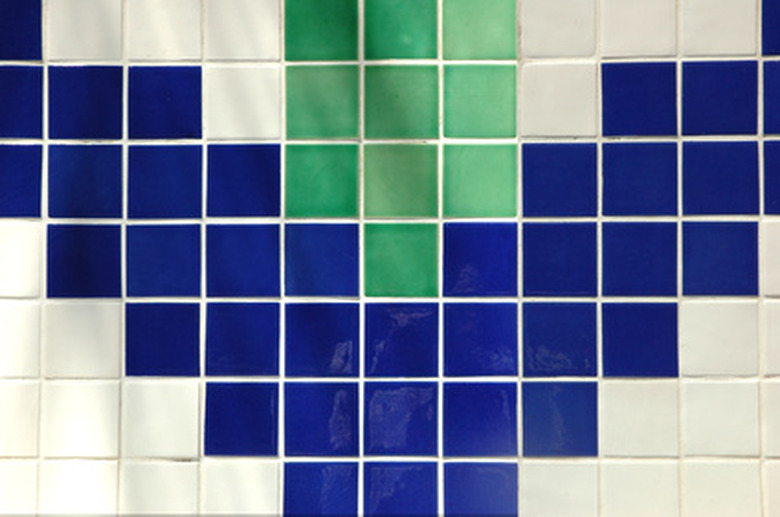How Do I Remove Water Under Ceramic Tiles After A Leak?
Things Needed
-
Rubber mallet
-
Small chisel
-
Wide putty knife
-
Thick towels
-
Caulk
-
Plumber's putty
-
Filter mask
-
Rubber gloves
-
1/2 cup bleach
-
2 large containers
-
1 qt. water
-
3 to 4 drops of dish soap
-
Scrub brush
-
Wet shop vacuum
-
Thin-set tile mortar
-
Metal trowel
-
Tile spacers
-
Premixed grout
-
Grout bag
-
Cloth
Water that has found its way underneath ceramic tiles after a leak can cause mold growth. If left alone to grow, the mold can become very dangerous, as mold spores can cause respiratory problems. Not only is it harmful to breath in, mold is also unattractive. Water left to stand underneath ceramic tiles will eventually compromise the structure of the tile itself, causing it to crack or break.
Step 1
Tap a rubber mallet on the head of a small chisel to remove the grout in the tile joints.
Step 2
Place a wide putty knife under the ceramic tile, parallel to the floor. Use the rubber mallet to tap the head of the putty knife to pop the ceramic tile from its place. Repeat this procedure for all ceramic tiles with underlying water. Set all the ceramic tiles you removed to the side.
Step 3
Lay several thick towels down on top of the water area to soak up the moisture.
Step 4
Chip away the old ceramic tile thin-set with the putty knife and mallet. You need a slightly smooth surface to replace the area with ceramic tile so they are even with the surrounding tile.
Step 5
Locate the area where the water leaked out. Use caulking and plumber's putty to stop the leak from causing future damage.
Step 6
Put on a filter mask to protect them from mold spores. If the water was underneath the tiles for a long period, you will need to remove any mold before you replace the ceramic tiles.
Step 7
Don a pair of rubber gloves to protect your skin from bleach. Pour 1/2 cup of bleach into a large container. Add 1 quart of water to the container, and place three to four drops of dish soap in the solution. Stir with a wooden spoon so the mixture becomes soapy. Dip a scrub brush into the solution and allow the excess water to drip away. With small, circular motions, scrub away all mold growing in the area. Vacuum the area thoroughly with a wet shop vacuum. Ensure no mold particles are left behind to grow.
Step 8
Mix thin-set tile mortar in a large container according to package directions. Apply a thin layer of thin-set onto the repaired area with the flat side of a metal trowel. Run the metal trowel over the layer of thin-set using the notched side. Place the old, undamaged or new replacement ceramic tiles on the thin-set mortar and wiggle to set in firmly. Insert a tile spacer around each piece of ceramic tile to create even joint spaces. Allow the thin-set to dry overnight.
Step 9
Remove tile spacers and place premixed grout into a grout bag. Squeeze the grout in the joints of each ceramic tile. Smooth the grout lines with your finger. Allow the grout to set for 30 minutes. Wipe off excess grout on the ceramic tiles with a dampened cloth. Allow the grout to dry overnight.
